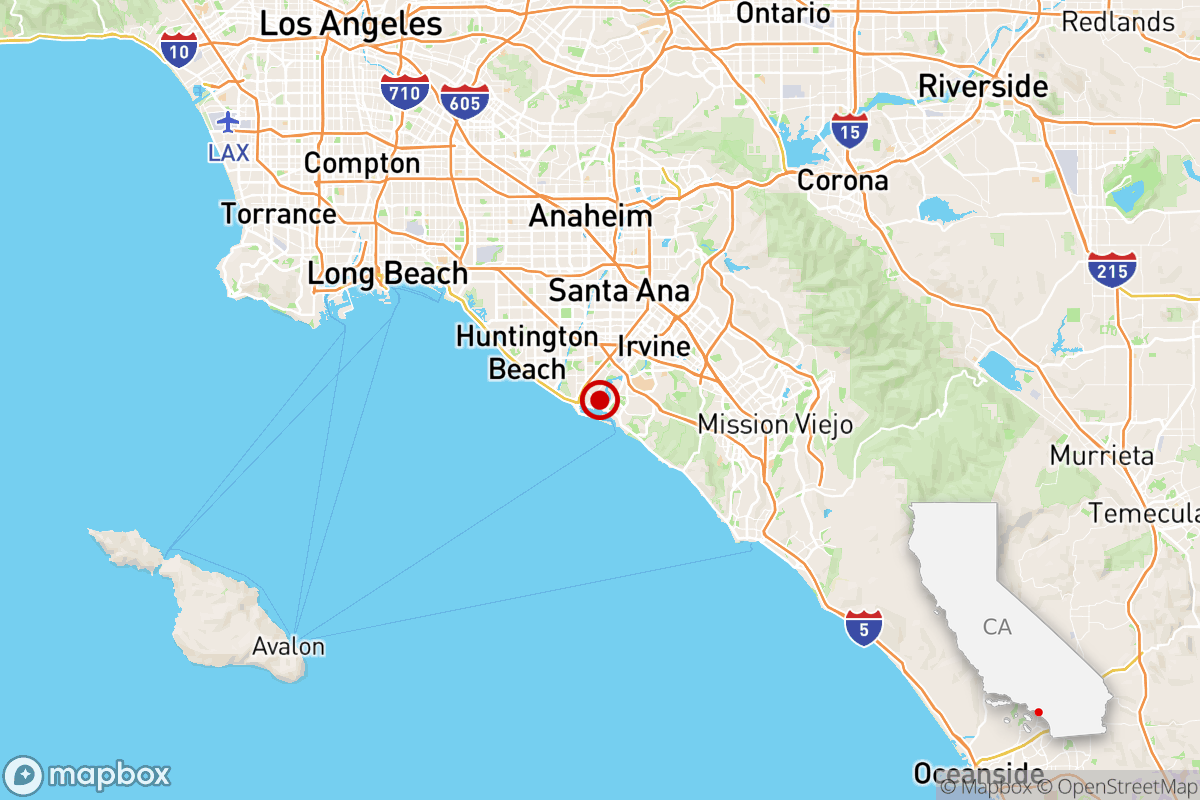Small earthquakes mount in Newport Beach-Costa Mesa area

- Share via
A trio of Southern California earthquakes have struck in the area of Newport Beach and Costa Mesa in the last two days, with a pair rumbling late Thursday afternoon.
The first earthquake Thursday, at 4:52 p.m., occurred along the Newport Beach-Costa Mesa border. The magnitude 3.6 temblor shook near Irvine Avenue and where Westcliff Drive in Newport Beach transitions into East 17th Street in Costa Mesa.
That was followed by a magnitude 3.4 aftershock at 5:04 p.m., with an epicenter about three-fifths of a mile to the southeast, beneath the residential street Somerset Lane, a few blocks from Upper Newport Bay.
Weak shaking, or Level 3 on the Modified Mercalli Intensity scale, was felt in Santa Ana, Westminster, Huntington Beach, Garden Grove and Irvine, in addition to Newport Beach and Costa Mesa, according to the U.S. Geological Survey. That shaking would produce vibrations similar to the passing of a truck, and may rock standing more cars slightly.
A foreshock to Thursday’s quakes occurred Wednesday, at 1:46 p.m. Originally estimated as a magnitude 2.6 with an epicenter underneath Newport Beach’s Mariners Park, it was upgraded to a magnitude 2.8, and its epicenter was moved one-quarter of a mile to the northwest, in a residential neighborhood of Costa Mesa.
The trio of earthquakes occurred near mapped traces of the Newport-Inglewood/Rose Canyon fault zone. The Newport-Inglewood fault has long been considered one of Southern California’s top seismic danger zones because it runs under some of the region’s most densely populated areas, from the Westside of Los Angeles to the Orange County coast.
The last major quake on that fault occurred in 1933 — the magnitude 6.4 Long Beach earthquake. The 1933 quake left nearly 120 dead and caused $40 million in property damage.
There have been a number of earthquakes felt across the region in the last week.
A pair of quakes hit the eastern Los Angeles neighborhood of El Sereno early this week. The first was magnitude 3.4, striking at 9:56 a.m. Sunday, a couple of blocks south of Huntington Drive and Eastern Avenue.
The second was magnitude 2.8, down from an earlier estimate of magnitude 3, and hit at 3:05 p.m. Tuesday. Its latest estimated epicenter was about 700 feet northwest of Sunday’s quake.
On Friday, at 10:26 a.m., a magnitude 3.6 earthquake — down from an original estimate of 3.8 — occurred with an epicenter just north of the Ojai Valley, causing weak shaking to be felt from Santa Barbara to Los Angeles.
It’s not uncommon for Southern California to see small earthquakes. Most do not lead to larger, catastrophic quakes. And although some larger earthquakes are preceded by smaller quakes, that is not always the case.
Experts say it’s impossible to know whether small earthquakes are foreshocks to a larger quake before the more powerful event strikes.
All the latest on Orange County from Orange County.
Get our free TimesOC newsletter.
You may occasionally receive promotional content from the Daily Pilot.




